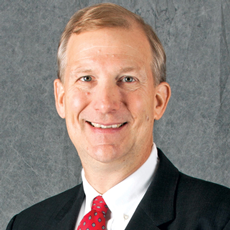
The world’s collective race to develop and distribute COVID-19 vaccines has been valuable in many ways.
While frustrating that it’s not progressing quicker (and who couldn’t see impatience coming once the juice started flowing into arms?) the process can be a model in another vital area of healthcare, and long-term care in particular.
We’re talking about unifying digital patient records, which will be imperative to streamlining and making care more efficient. The hope is that in a few short years, we will be taking the seamless flow of integrated patient medical information for granted, just as we hope within a matter of months to not have to worry about our every movement and breath due to COVID-19 fears.
Why shouldn’t a person’s medical record and history flow seamlessly from hospital to nursing home, to emergency department No. 1, to emergency department No. 2, to specialists 1, 2, 3 and 4, and more?
Care, communication and the bottom line all stand to improve once a “miracle cure” for siloed information is developed and widely adopted. Patients will arrive at the doorstep with care history and plans already in place.
Luckily, there’s an intriguing campaign underway to do just that. The effort is noteworthy because it’s being attempted on a very large scale.
PointClickCare Technologies, which estimates its cloud-based services touch about 70% of the long-term care market, recently acquired Collective Medical in a deal estimated at between $500 million and $1 billion. The latter enables real-time, cross-continuum care coordination in thousands of settings and with every major national health plan in the country.
Among other things, Collective’s network touches about 45 million hospital emergency room and inpatient visits a year. Before the PCC deal, however, its post-acute reach was fairly limited.
The partnership is going to identify high-risk patients who might “fall between the cracks,” as Chris Klomp, Collective’s CEO turned PointClickCare executive VP, described it to me. The combined effort will stitch together information that will reveal, for example, if skilled nursing discharges don’t follow up properly with their primary care provider or exhibit troubling characteristics.
Effort goes deep and wide
Collective has the breadth and PCC has “the depth,” said Dave Wessinger, the latter’s president. Providers already in PCC’s network won’t have to do much to take part in the unification effort, Wessinger said. They just have to consent to share their information in a new way, and that will get 2.5 million annual discharges into the mix.
Keep in mind this is a pipeline heading both into and out of long-term care. “Inevitably, post-acute and acute have to come together,” Wessinger emphasized, calling today’s administration of information between the two “disastrous.”
Rare is the patient who hasn’t been frustrated by unlinked or non-digital providers, we can probably all attest.
Klomp emphasizes that the goal line is clinical interoperability. Records should be available in one place, not spread across five or more different siloes. The patient doesn’t care if multiple systems are in play. He or she just wants to be treated properly.
There’s no disagreement that it’s time to move beyond talking about high-minded interoperability ideals. The fax machine should be retired. There’s this thing called the internet that comes in mighty handy.
The PCC-Collective juggernaut is poised to create new standards and expectations regarding registering and storing information. That’s good for everyone and should pave the way to better relationships with operators’ business partners, especially those bearing risk.
“Not in any other market, in any other way, could anybody do what we’re about to go do,” Wessinger said. “Anybody else trying this is maybe five to 10 years out from solving this problem. We’re going to do it in 24 months, if not sooner.”
Industry’s benefit
Best of all, the two execs say, their efforts are meant for the good of all. Isn’t that a lot like collective progress that will eventually be made with COVID-19 vaccines?
“We’re not exclusive. It’s absolutely inclusive. We’re just going to get there faster and safer, so others can follow,” Wessinger explained. “Our bias is to action. The same way we moved to the cloud to be a SAAS vendor back in 2000. Nobody else was going there, we did it and the next thing you know, the whole world pivoted and that’s the new model.”
That same spirit is present here. The idea is to show a pertinent model and demonstrate it on a large scale.
“We’re perfectly positioned to do that, and that’s what’s going to drive all others to do it,” Wessinger said. “This is a solution that [eventually] will be available to all. We just happen to be able to kick start it in a totally meaningful way. If somebody else had done it already, we’d be glad to take part in it.”
So, status quo, consider yourself under attack. That’s a good thing.
“We’re prepared to [move forward] and force others to come along and do great things,” Wessinger said. “It’s not a matter of ‘if.’ It’s ‘when.’ The plumbing’s in place; it’s ready to flow.”
Wessinger and Klomp indirectly insinuated even stronger parallels to COVID vaccination efforts.
“We’re going to impact millions of lives in the post-acute space,” the former said, “And Chris and our model will continue to impact tens of millions of lives, and hopefully more, as we continue to support the vulnerable population.”
We can all certainly hope so.
Follow Executive Editor James M. Berklan @JimBerklan.



